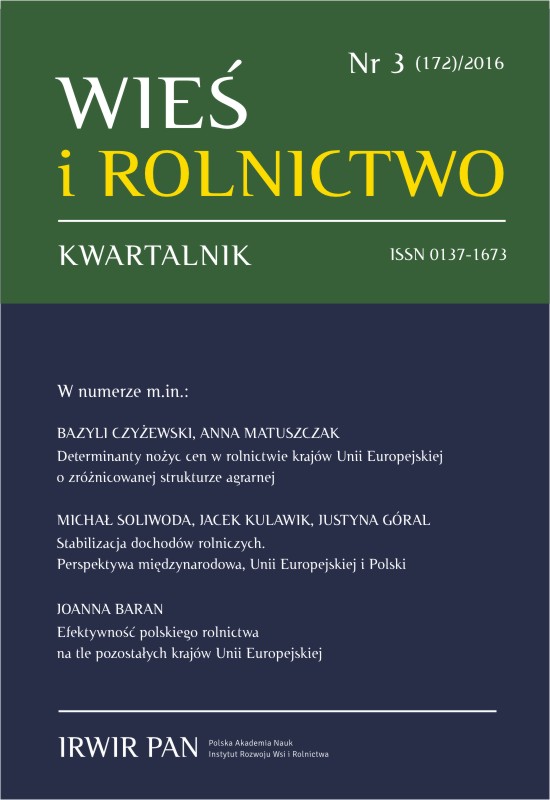Determinanty nożyc cen w rolnictwie krajów Unii Europejskiej o zróżnicowanej strukturze agrarnej
DETERMINANTS OF THE PRICE SCISSORS IN AGRICULTURE OF THE EUROPEAN UNION MEMBER STATES FEATURING DIFFERENT AGRARIAN STRUCTURES
Author(s): Bazyli Czyżewski, Anna MatuszczakSubject(s): Social Sciences, Economy, Agriculture, Sociology, Economic development
Published by: Instytut Rozwoju Wsi i Rolnictwa Polskiej Akademii Nauk
Keywords: agricultural prices; price gap; price scissors; agrarian structures
Summary/Abstract: The index of agricultural goods output comprises weighted changes of prices of agricultural commodities whereas the index of intermediate consumption describes fluctuations of input prices, including seeds and nursery stock, energy, fertilizers, soil improvers, plant protection products or feedstuffs. The relation of these two indices is defined as “price gap” or “price scissors”. There are a lot of price models for agricultural goods in the literature. However, the issue of modeling drivers for the price gap has rarely been explored. For that reason the authors aim to estimate long-term regression models of the agricultural price gap for different European countries that represent varied agrarian structures. The analysis entails a few stages. In the first stage, the long-term price indices (from 1980 to 2014) were computed based on EUROSTAT and FAOSTAT agricultural prices data for all available agricultural products and inputs in the EU-27. Then, the aggregated indices were weighted with a volume of production or intermediate consumption on the basis of the average price indices for the respective outputs or inputs. In the second stage, a cluster analysis was carried out with regard to the utilization of agricultural land factor by individual farms in the subsequent European Union Member States. In the third stage, three countries were chosen for case studies from each of the distinguished clusters and the econometric models of price gap were estimated where the indices of outputs and inputs were independent variables. An interesting finding was made that marginal effects for price gap drivers were much stronger in the countries of an intensive and large scale agriculture (such as France, the UK and Denmark) than in the countries of fragmented agrarian structures such as Greece, Portugal and Ireland.
Journal: Wieś i Rolnictwo
- Issue Year: 172/2016
- Issue No: 3
- Page Range: 7-40
- Page Count: 34
- Language: Polish

